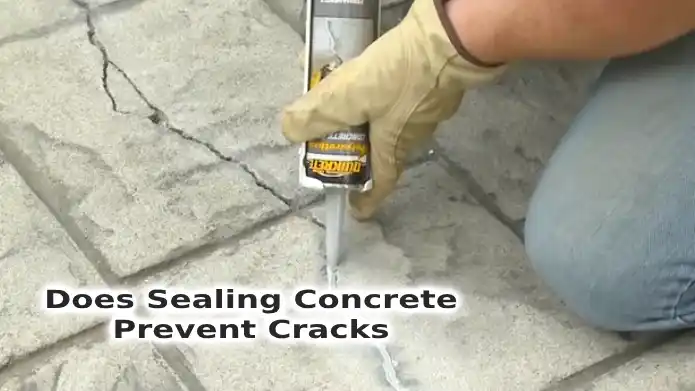When you see a crack in your concrete, you may wonder, “Does sealing concrete prevent cracks?”
Sealing concrete can help reduce the occurrence of cracks, but it does not guarantee complete prevention. Concrete is a porous material. Sealing it can provide a protective barrier against moisture, chemicals, and other factors contributing to crack formation.
As concrete is exposed to environmental conditions such as freeze-thaw cycles, moisture penetration, or heavy loads, it undergoes expansion and contraction, resulting in cracks. A concrete seal helps prevent water and other substances from penetrating the concrete, reducing the possibility of cracks.
Let’s take a look at how concrete sealers can keep cracks at bay and the different kinds available. Get the details so you can pick the perfect one for your project.
How Do Concrete Sealers Help Prevent Cracks: 5 Ways
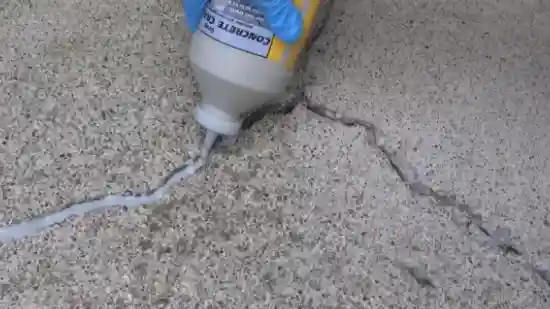
If you want to prevent cracks in your concrete, then you need to consider using a sealer. The following is a brief overview of how concrete sealers serve to prevent cracks in concrete:
1. Moisture Protection
2. Chemical Resistance
3. Freeze-Thaw Protection
4. Increased Durability
5. Prevention of Efflorescence
Let’s get into the details:
1. Moisture Protection
Concrete is a porous material that can easily absorb water and other liquids. This can lead to expansion and contraction, causing cracks to form. Fortunately, concrete sealers provide a layer of protection on the surface of the concrete, reducing moisture absorption and preventing potential damage caused by water.
Here are three ways that moisture protection can benefit your concrete:
- Prevents cracking: Moisture can cause concrete to expand and contract, leading to cracks. By using a concrete sealer, you can prevent moisture from penetrating the surface of the concrete, reducing the risk of cracking.
- Reduces maintenance: Cracked concrete can be expensive to repair and maintain. Protecting your concrete from moisture damage can reduce the need for repairs and maintenance in the long run.
- Improves appearance: Moisture can cause concrete to discolor and look unappealing. By using a sealer, you can enhance the appearance of your concrete, making it look clean and new for longer.
2. Chemical Resistance
Using a sealer, you can ensure that your concrete withstands harsh chemicals, protecting it from degradation and giving you peace of mind.
Chemicals such as salts, acids, and oils can cause significant damage to concrete over time. These substances can penetrate the surface of the concrete, causing it to weaken and eventually crack.
By applying a sealer, you can prevent these materials from penetrating the surface and causing damage, ultimately extending the life of your concrete.
Sealers work by forming a protective barrier on the surface of the concrete. This barrier prevents chemicals and other harmful substances from penetrating the surface, reducing the risk of damage and cracks.
Sealers can also make cleaning easier, preventing stains and other marks from penetrating the surface. By sealing your concrete, you’re investing in its longevity and ensuring that it’ll stand up to the harsh chemical exposure it may encounter.
4. Freeze-Thaw Protection
Ensuring your concrete stays strong against the icy grip of winter is a smart move, and applying a sealer can provide the protection needed to avoid costly repairs in the future.
When water seeps into the concrete and then freezes, it can cause the concrete to expand and crack. This repeated freeze-thaw cycle can lead to serious damage and the need for expensive repairs.
Using a concrete sealer, you can minimize the amount of water penetrating your concrete, reducing the chances of freeze-thaw damage.
Concrete sealers work by creating a barrier against water absorption. They’re designed to penetrate into the pores of the concrete and fill them, preventing water from getting in.
This not only helps to prevent freeze-thaw damage, but it also helps to protect against other forms of water damage, such as efflorescence, which can cause unsightly white stains on your concrete.
5. Increased Durability
If you want your concrete to be tough as nails, you’ll be pleased to know that using a sealer can significantly enhance its overall strength and durability. Sealing your concrete reinforces its surface and protects it from environmental factors that can lead to wear and tear.
The sealer acts as a barrier against the elements such as UV rays, extreme temperatures, and chemicals, which can weaken the concrete’s surface over time. With a sealer, your concrete stays in top condition for longer.
Sealing your concrete also reduces the formation of cracks and other surface damage. As the sealer protects the surface from abrasion, impact, and surface erosion, it helps mitigate the effects of these damages that can lead to cracks.
6. Prevention of Efflorescence
You can avoid that pesky white residue on your concrete and keep it looking fresh with a sealer, which stops salt migration and reduces efflorescence. Efflorescence is not only unsightly but can also lead to the deterioration of your concrete over time.
This white, powdery residue appears due to the migration of salts within the concrete. Water moving through the concrete carries these salts to the surface, crystallizing and forming efflorescence.
Applying a sealer will prevent salts from migrating, reducing efflorescence and cracking.
Sealing your concrete can also extend its lifespan and prevent costly repairs. Efflorescence is not only a cosmetic issue but can also lead to cracking and spalling of the concrete surface. When water enters the concrete and freezes, it expands, causing the concrete to crack and deteriorate.
What Are the Different Types of Concrete Sealers?
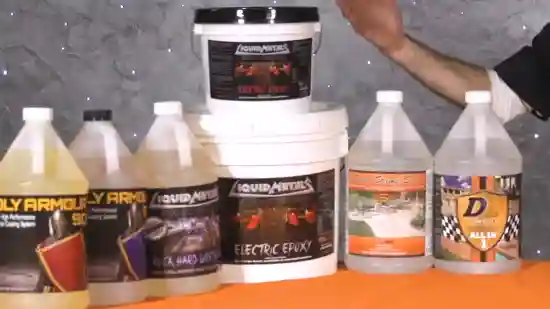
If you’re looking to seal your concrete surfaces, you should know that different types of sealers are available. These are the most common concrete sealers:
- Acrylic Sealer
- Polyurethane Sealer
- Epoxy Sealer
- Penetrating Sealer
- Silicate Sealer
- Silane/Siloxane Sealer
Let’s look at the sealers in more detail:
1. Acrylic Sealer
Acrylic sealers, with their ability to form a protective film on concrete surfaces, offer moderate protection against various environmental factors.
Here are some factors that acrylic sealers can help protect against:
Water
Acrylic sealers are known for their water-resistant properties, making them an ideal choice for sealing concrete in areas exposed to water, such as driveways, patios, and pool decks.
By preventing water from penetrating the concrete surface, acrylic sealers can help reduce the likelihood of cracks caused by freeze-thaw cycles or water-induced erosion.
UV rays
Exposure to sunlight can cause concrete surfaces to fade and deteriorate over time. Acrylic sealers are formulated with UV-resistant additives that help protect the surface from the damaging effects of the sun’s rays. Acrylic sealers can help prevent cracks caused by sun damage by keeping the concrete surface intact.
In addition to their protective properties, acrylic sealers offer many other benefits, such as enhancing the appearance of the concrete surface and making it easier to clean and maintain.
With the right application, acrylic sealers can provide long-lasting protection from the elements.
2. Polyurethane Sealer
Get ready to experience a durable, high-gloss, or satin finish with polyurethane sealers. These sealers are perfect for areas that experience high traffic and exposure to harsh conditions like driveways, commercial floors, or industrial settings.
They offer excellent protection against abrasion, chemicals, and UV rays, making them a top choice for long-lasting solutions. Polyurethane sealers form a highly durable and protective layer on the concrete surface.
They’re known for their ability to prevent water and moisture from penetrating concrete, which helps prevent cracks. You need to note that while polyurethane sealers can help to prevent cracks, they can’t completely eliminate them.
Regular maintenance and upkeep of the concrete surface are still necessary to ensure its longevity and prevent any damage from occurring.
3. Epoxy Sealer
Epoxy sealers are one of the most durable and long-lasting sealers available for concrete surfaces. They create a hard and thick coating on the surface that provides excellent protection against chemicals, stains, and abrasions.
They are commonly used in commercial and industrial applications, such as warehouses, garages, or manufacturing facilities. Also great for driveways, patios, and pool decks with high traffic.
Epoxy sealers are easy to apply and can be used on both interior and exterior concrete surfaces. They’re also available in various colors and finishes, allowing you to customize your concrete surface’s look.
4. Penetrating Sealer
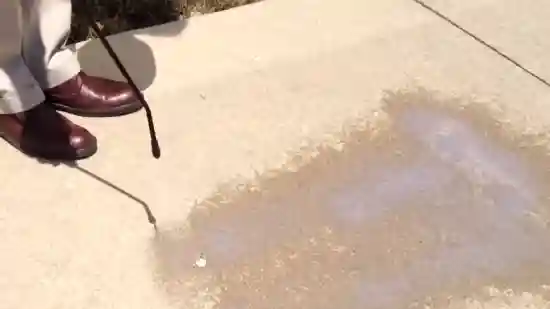
Let’s explore another option for sealing concrete: penetrating sealers. These sealers are designed to penetrate deep into the concrete and chemically bond with it, providing long-lasting protection against water damage, stains, and freeze-thaw cycles.
One of the main advantages of penetrating sealers is that they don’t leave a visible coating on the surface, which means that the natural appearance and texture of the concrete will remain unchanged.
Also, penetrating sealers are highly effective at reducing the porosity of the concrete, which can help prevent cracks from forming in the first place.
5. Silicate Sealer
Silicate sealers chemically react with the concrete, forming a hard, crystalline structure within the pores. This reaction increases its strength, reduces dusting, and provides some protection against water penetration and alkali-silica reaction.
These sealers penetrate the concrete’s surface deep and react with the free lime and calcium hydroxide to form a calcium silicate hydrate gel. This gel fills the pores and strengthens the concrete, making it more resistant to cracking and other forms of damage.
Silicate sealers are especially effective for preventing cracks in industrial and commercial concrete floors that are subject to heavy traffic and wear. They are also ideal for concrete surfaces that are exposed to extreme temperatures, freeze-thaw cycles, and deicing salts.
6. Silane/Siloxane Sealer
If you’re looking for a water-repellent solution for your exterior concrete surfaces, silane/siloxane sealers are a great option. They can reduce the risk of moisture damage, efflorescence, and staining. These sealers penetrate deep into the concrete to form a hydrophobic barrier, which repels water and other liquids.
Because of this, water can’t penetrate the concrete, reducing the chances that cracks may form as a result of moisture penetration.
How long does concrete sealing last?
The lifespan of concrete sealing varies depending on the sealer used. For instance, acrylic sealers typically last 1 to 3 years before re-coating is required.
While these sealers effectively provide a protective layer on the concrete surface, their thinner film and lower solids content make them more prone to damage and wear.
In contrast, epoxy coatings and urethane coatings offer a longer-lasting solution. These coatings can protect for 5 to 10 years before they need to be re-coated.
With a thicker and more durable barrier, epoxy and urethane coatings are more resistant to abrasion, chemicals, and heavy traffic. Also, they can enhance the aesthetic value of concrete by providing a glossy or matte finish.
What is the best way to find a good quality concrete sealer?
The best way to find a good quality concrete sealer is to check out different sealers’ specifications and reviews. You need to research and compare various brands and products to select a reliable and effective sealer.
So you can check out our concrete sealer reviews to discover the best options available. If you have a fountain and need to seal it, you can find the best concrete fountain sealer by checking our review. We provide detailed information and recommendations to help you make an informed decision.
Will power washing remove the concrete sealer?
Power washing can potentially strip away the protective layer of sealer on your concrete surface, so remember to exercise caution when cleaning.
The high-pressure stream of water, combined with the use of detergents or cleaning solutions, can break down the sealer and cause it to deteriorate. This can leave your concrete surface vulnerable to damage from the elements, such as cracking or staining.
To prevent the sealer from being removed during power washing, it’s recommended to use a lower pressure setting, a wider spray pattern, and a gentle detergent specifically formulated for use on sealed surfaces.
Is it better to roll or spray concrete sealer?
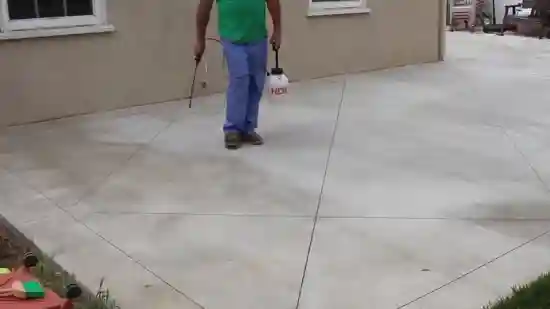
Choosing between rolling or spraying when applying a concrete sealer relies on the size and specific requirements of the surface. Sprayers are more efficient in larger areas, such as commercial floors.
A roller can be a suitable choice for smaller surfaces, such as garages or other exterior areas. Rolling allows for more control and precision in applying the sealer, especially in tight or intricate areas. It is also a less expensive process than spraying, making it an attractive option for those on a budget.
How thick should concrete be to avoid cracking?
The recommended minimum thickness for standard residential applications is at least 4 inches to avoid unsightly damage. But for some situations, this may not be enough.
For example, if your concrete is subjected to heavy loads or extreme weather conditions, it may require a thicker layer to prevent cracking.
Factors that can affect the appropriate thickness of your concrete include the type and amount of reinforcing materials used and the climate conditions in your area.
In areas with extreme temperature changes, such as from hot to cold or dry to wet, your concrete may expand or contract, leading to cracks. In such cases, it’s recommended to use reinforcing materials like rebar or wire mesh to strengthen the concrete.
What is the recommended number of coats for applying concrete sealer?
It’s commonly advised to apply at least two coats of concrete sealer to achieve optimal results in protecting the surface and ensuring durability.
The first coat penetrates the concrete and fills any pores or voids, while the second coat creates a protective layer on the surface.
But, the recommended number of coats can vary depending on the type of sealer used, the condition of the concrete surface, and the level of protection desired. When applying a concrete sealer, following the manufacturer’s instructions and applying the coats evenly and consistently is key.
Applying too many coats can result in a buildup that can cause concrete peeling or flaking while applying too few coats can leave the surface vulnerable to damage.
Protect Your Concrete: Seal it to Help Prevent Cracks
You now know that sealing concrete can indeed help prevent cracks from forming. A concrete sealer fills up the pores in the concrete to create a barrier that prevents moisture from getting in. This, in turn, reduces the risk of cracks forming due to freeze-thaw cycles, which is one of the leading causes of concrete cracks.
Different types of concrete sealers are available, each with unique properties and benefits. The choice of sealer will depend on the specific application and the desired level of protection.
As for the number of coats required, applying at least two coats of sealer for optimal protection is recommended.
Overall, sealing your concrete is a smart investment that can help prolong the life of your concrete and save you money in the long run. So, don’t wait until cracks start forming. Take action now and protect your concrete with the right sealer.
